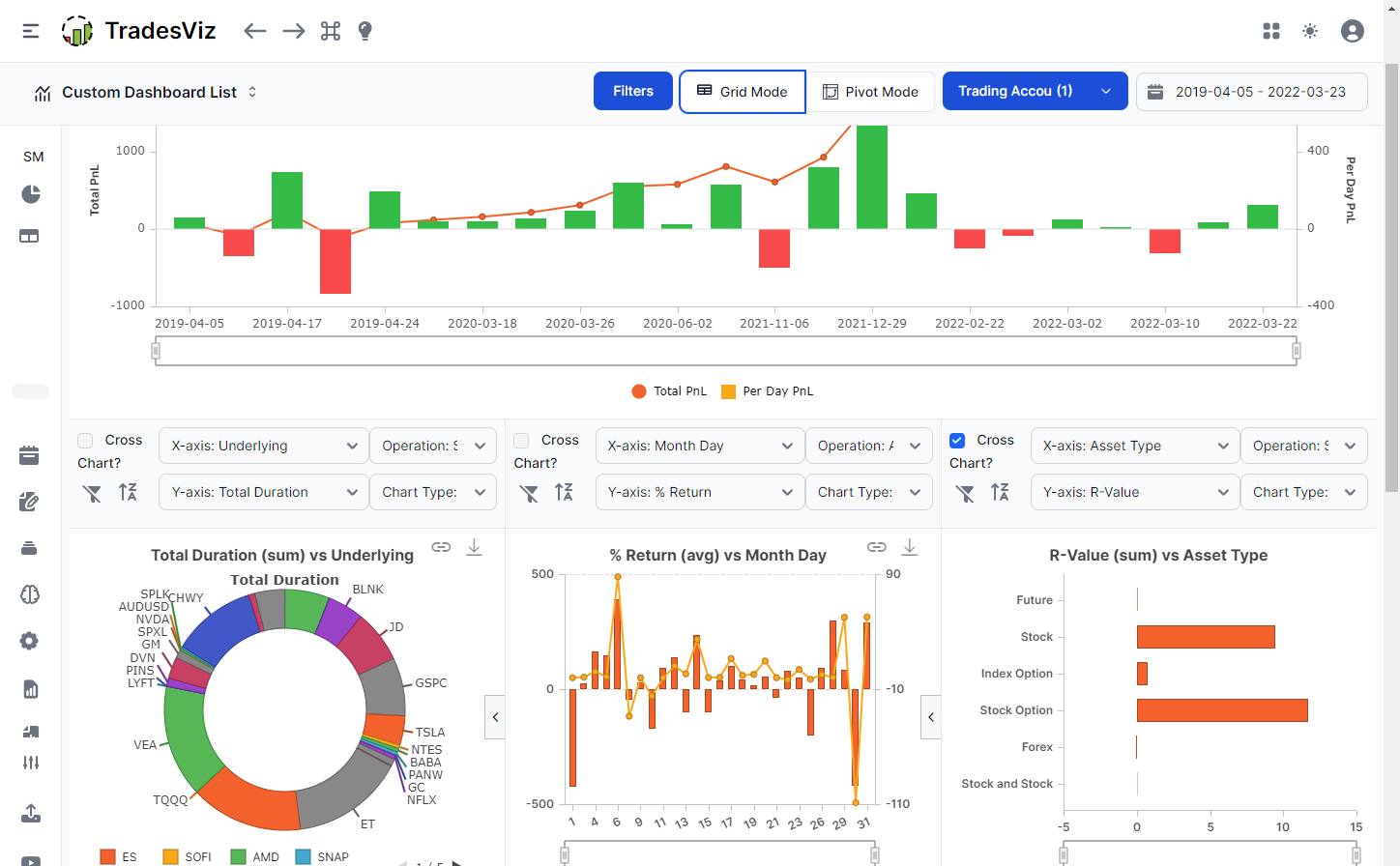Did you know that the first algorithmic trading program was developed in the 1970s and could only execute one trade every few minutes? Fast forward to today, and day traders can harness the power of bots to streamline their trading strategies. This article dives into everything you need to know about automating your day trading with bots. We’ll guide you through setting up trading bots without coding skills, selecting the best automation software, and understanding key features to look for. Learn how trading bots analyze market data, connect to brokerage accounts, and manage risks effectively. Additionally, we’ll cover backtesting strategies, optimizing bot settings, and monitoring performance. With insights from DayTradingBusiness, you'll be equipped to enhance your trading experience while avoiding common pitfalls. Get ready to take your day trading to the next level!
How can I set up trading bots for day trading?
Choose a reliable trading platform that supports automation, like MetaTrader or TradingView.
Develop or buy a trading bot with strategies suited for day trading, such as scalping or quick momentum trades.
Configure your bot with specific parameters: entry/exit points, stop-loss, take-profit levels.
Use backtesting tools to test the bot’s performance on historical data before live trading.
Connect the bot to your trading account via API keys, ensuring secure access.
Monitor its performance regularly and adjust settings based on market conditions and results.
Consider using pre-built trading bots or platforms like 3Commas or Cryptohopper if you prefer ready-made solutions.
What are the best trading bots for day traders?
The best trading bots for day traders include 3Commas, HaasOnline, Cryptohopper, and Gunbot. They offer real-time automation, customizable strategies, and integration with major exchanges like Binance and Coinbase. Choose one based on your trading style, ease of use, and supported features.
How do I choose the right automation software for trading?
Choose automation software that integrates with your trading platform, offers reliable real-time data, and supports strategies you use. Look for user-friendly interfaces, customizable algorithms, and strong backtesting features. Ensure the bot has solid risk management tools like stop-loss and take-profit options. Read reviews, test with demo accounts, and pick software that matches your trading style and technical comfort level.
Can I automate my day trading without coding skills?
Yes, you can automate day trading without coding skills by using pre-built trading bots or platforms with visual interfaces. Many services offer drag-and-drop tools, customizable strategies, and user-friendly setups. Examples include MetaTrader, TradingView with built-in automation, and third-party bot services like 3Commas or Cryptohopper. These tools enable you to set trading parameters, stop-losses, and take-profit levels without writing code.
What are the key features to look for in trading bots?
Look for trading bots with real-time market analysis, customizable strategies, risk management tools, easy integration with your broker, and user-friendly interfaces. Ensure they offer backtesting, security features, and support for multiple assets. Prioritize bots that adapt to market changes and provide clear performance metrics.
How do trading bots analyze market data?
Trading bots analyze market data by scanning real-time price movements, volume, and order book activity. They use algorithms and technical indicators like moving averages, RSI, or MACD to identify patterns and signals. Bots process news feeds and social media sentiment if integrated, to gauge market mood. They execute trades automatically based on predefined criteria, reacting faster than humans. This analysis helps automate day trading by spotting opportunities and minimizing manual decision delays.
How do I connect trading bots to my brokerage account?
Connect trading bots to your brokerage account by using a compatible API or trading platform that supports automation. Register for API access from your broker, generate API keys, and input them into your trading bot software. Ensure your broker allows API trading and that your account has the necessary permissions. Use a trusted trading bot platform or develop custom scripts that interface securely with your broker’s API. Test the connection with small trades before fully automating your day trading.
What are the risks of using trading bots in day trading?

Using trading bots in day trading can lead to risks like losing money rapidly during volatile swings, technical glitches causing unintended trades, and over-optimization that backfires in real markets. Bots may execute trades based on flawed algorithms or outdated data, resulting in poor decisions. Relying heavily on automation can also make traders less attentive, missing market shifts. Additionally, some trading platforms restrict or ban bot use, risking account suspension.
How can I backtest my trading bot strategies?
Use a trading platform with backtesting features like MetaTrader or TradingView. Input your strategy code, then run it against historical market data to see how it performs. Adjust parameters and rerun tests to refine your bot’s effectiveness before live trading.
How do I optimize bot settings for better performance?
Adjust bot settings by setting clear entry and exit rules, optimizing risk parameters, and fine-tuning thresholds for profit and loss. Use backtesting to refine these parameters based on historical data. Enable real-time monitoring to catch and fix issues quickly. Regularly update the bot’s algorithms to adapt to market changes. Keep the trading frequency balanced to avoid overtrading. Test different strategies in demo mode before going live.
What are common mistakes when automating day trading?

Common mistakes when automating day trading with bots include relying too much on backtested strategies without live testing, neglecting risk management, over-optimizing algorithms, ignoring market volatility, and failing to monitor bot performance regularly.
Learn about What Are Common Mistakes in Institutional Day Trading?
How do I ensure my trading bots follow my risk management rules?
Set clear risk parameters in your trading bot’s configuration, like stop-loss and take-profit levels. Use predefined risk management rules within the bot's code to limit exposure per trade. Regularly monitor and update these settings based on market conditions. Test your bot in a demo environment to confirm it enforces your risk rules correctly. Integrate alerts or automated shutdowns if risk thresholds are breached.
Learn about How can poor risk management ruin a day trading account?
Can trading bots work with all market conditions?
No, trading bots don’t work well in all market conditions. They excel in trending markets but can struggle during volatile or sideways (range-bound) movements. Sudden spikes or crashes can cause bots to make poor decisions because they rely on predefined algorithms. For best results, use trading bots in markets with clear trends or set them to adapt to different conditions.
How do I update or adjust my trading bots over time?
To update or adjust your trading bots, regularly review their performance and tweak settings based on market changes. Use backtesting to test new strategies before live updates. Keep your bot’s algorithms aligned with current market trends and news. Automate routine adjustments through scheduled updates or triggers for specific conditions. Monitor real-time performance and make incremental changes rather than large overhauls. Stay informed on market shifts to refine your trading bot’s parameters continuously.
What are the legal considerations for automating trades?
Ensure compliance with securities laws and regulations in your jurisdiction, including registration requirements if applicable. Use reputable trading platforms that support automated trading and have clear API policies. Avoid market manipulation or creating unfair trading advantages. Understand the risks of automated trading, like algorithm errors or unexpected market moves, and implement proper risk management. Keep records of your trading algorithms and transactions for legal review. Stay updated on legal changes related to algorithmic trading and automated systems.
How do I monitor my trading bots effectively?
Use real-time dashboards and alerts to track bot performance, check logs regularly, and set specific metrics like profit targets and drawdown limits. Monitor market conditions and bot behavior simultaneously to catch anomalies early. Set up automated notifications for significant events or errors. Regularly review trading logs and performance reports to identify patterns or issues. Test your bots in demo mode before live trading to ensure they respond well to changing market conditions.
Learn about How to Backtest Day Trading Bots Effectively?
What is the cost of automated trading solutions?
Automated trading solutions typically cost between $200 to $1,500 per month for software subscriptions, plus potential one-time setup fees. Some platforms offer free basic versions, but advanced features and better algorithms usually come with a subscription. Custom-built bots or high-end institutional tools can cost thousands or even tens of thousands of dollars.
How do I troubleshoot issues with my trading bots?
Check your bot’s connection to your trading platform and ensure API keys are correct. Review logs for errors or unexpected behavior. Test with small trades to verify it executes properly. Update your bot software and strategies regularly. Monitor market conditions that might affect performance. Disable and re-enable the bot if it’s stuck. Confirm your account has sufficient funds and permissions. Use backtesting to identify issues before live trading.
Learn about How to Troubleshoot Common Issues with Day Trading Bots?
Can I automate both buying and selling with bots?
Yes, you can automate both buying and selling in day trading using trading bots. These bots can execute trades based on predefined strategies, technical indicators, or algorithms, allowing continuous market participation without manual input.
How do trading bots impact my trading psychology?
Trading bots reduce emotional reactions by executing trades based on algorithms, helping you stay disciplined. They eliminate impulsive decisions driven by fear or greed, making your trading more consistent. Using bots shifts focus from emotional stress to strategy execution, improving mental clarity. However, overreliance can cause complacency, so balance automation with active monitoring.
Learn about How Do Prop Firms Impact Day Trading Profitability?
Conclusion about How to Automate My Day Trading with Bots?
Automating your day trading with bots can enhance efficiency and potentially improve profitability. By understanding how to set up and choose the right trading bots, you can tailor automation to fit your strategy and risk tolerance. It's crucial to consider features, backtesting, and effective monitoring to ensure your bots align with your trading goals. As you navigate this technology, remember that DayTradingBusiness is here to provide expert insights and support to help you maximize your trading potential.